Fruit Trees for California Gardens: Healthier Soil, Smarter Watering, Easier Harvests
Fruit trees bring a lot of joy to a garden—stone fruit blossoms in spring, shade in summer, and fruit you can pick right outside your door. They’re also a great way for kids (and adults) to see where food comes from and how it grows. At Farmscape, we design and maintain fruit trees so they’re healthy, productive, and harvestable—no ladders required.
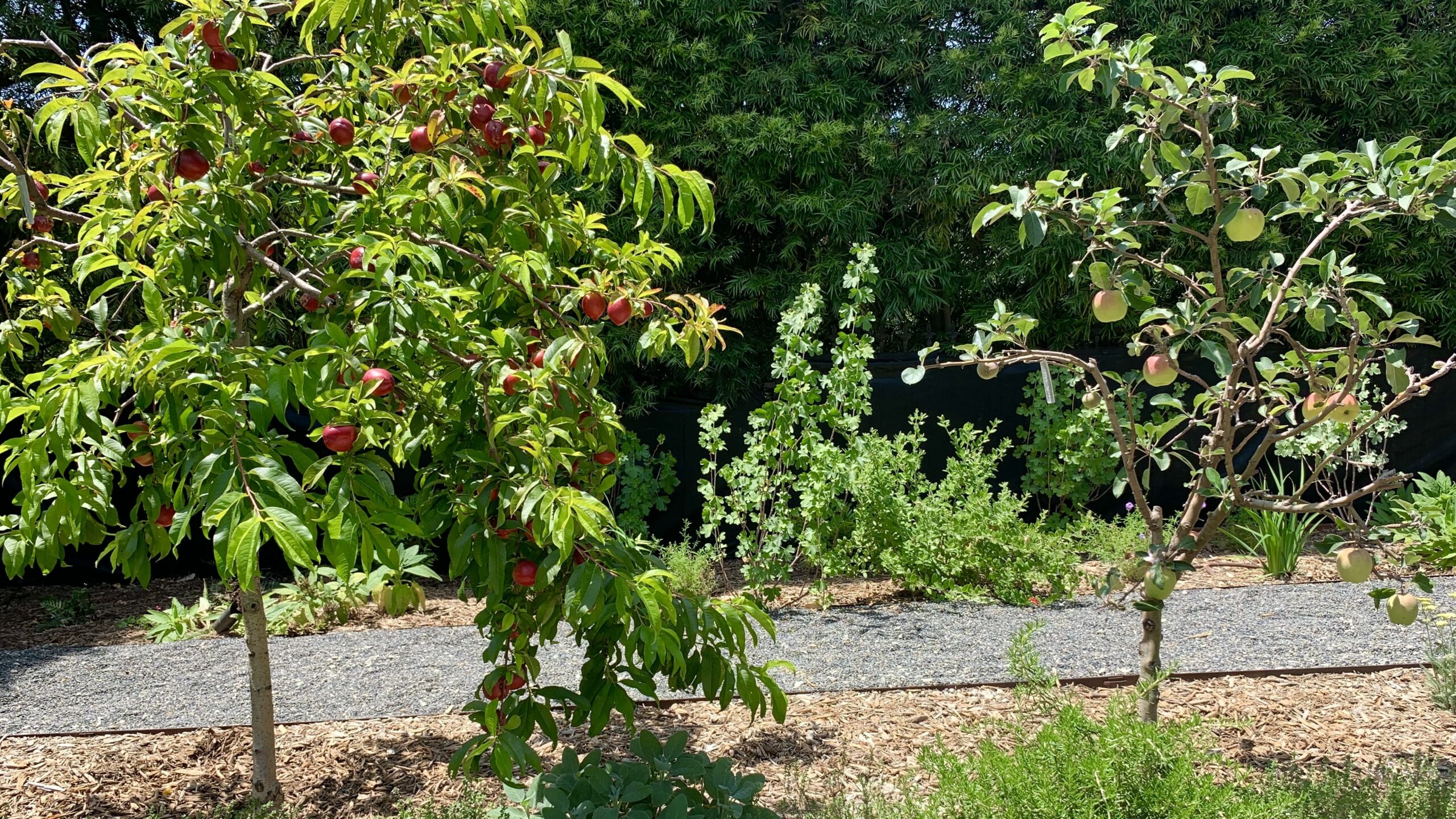
BUILD LIVING SOIL (WHY WE USE MULCH, NOT GRAVEL)
Healthy trees start with healthy soil. That’s why we use organic mulch around fruit trees instead of hardscape materials like decomposed granite.
- Insulation: Mulch moderates soil temperatures so roots don’t cook in summer or chill in winter.
- Moisture retention: It reduces evaporation, helping irrigation water stay where trees need it.
- Organic matter: As mulch breaks down, it feeds soil life and improves structure over time—boosting tree health season after season.
Pro tip: Keep mulch 3–4 inches deep and a few inches away from the trunk flare to avoid moisture against the bark.
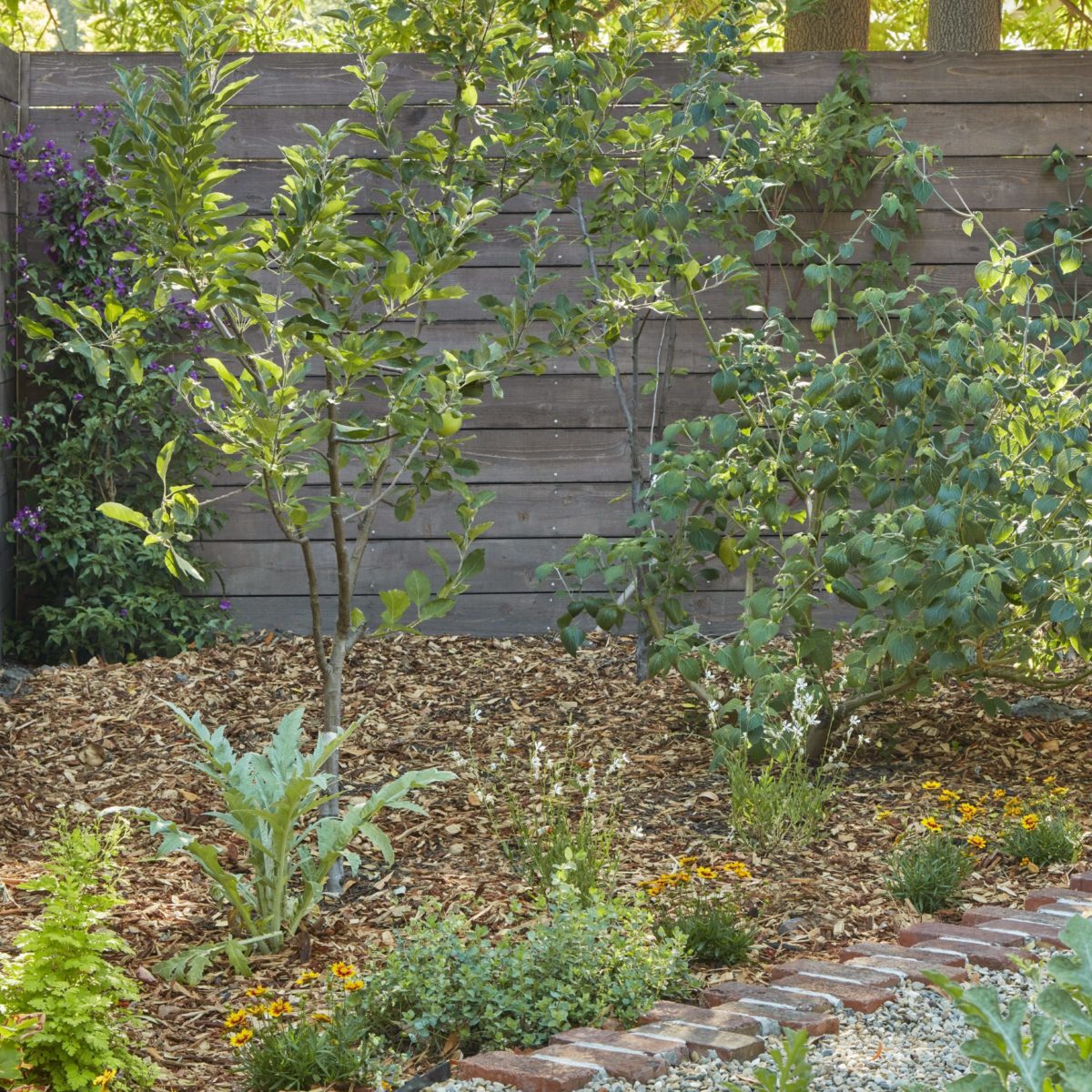
WATERING THAT GROWS WITH YOUR TREE (SPIRALS > RINGS)
Consistent moisture is key, especially between the root ball and the surrounding native soil. We use drip irrigation—not bubblers—to deliver even, slow water where roots can actually use it.
- The spiral layout: We lay drip tubing in a loose spiral around each tree. As the tree grows, we can pull up the staples and widen the radius—or add a coupler at the end of the line and extend the spiral. No cutting into existing lines or rebuilding a fixed ring.
- Why not rings? Fixed rings lock you into one size. Expanding them later is more work and is often overlooked in landscape maintenance—especially around edibles.
Result: trees get steady, right-sized moisture through all growth stages, with an irrigation system that’s simple to adjust.
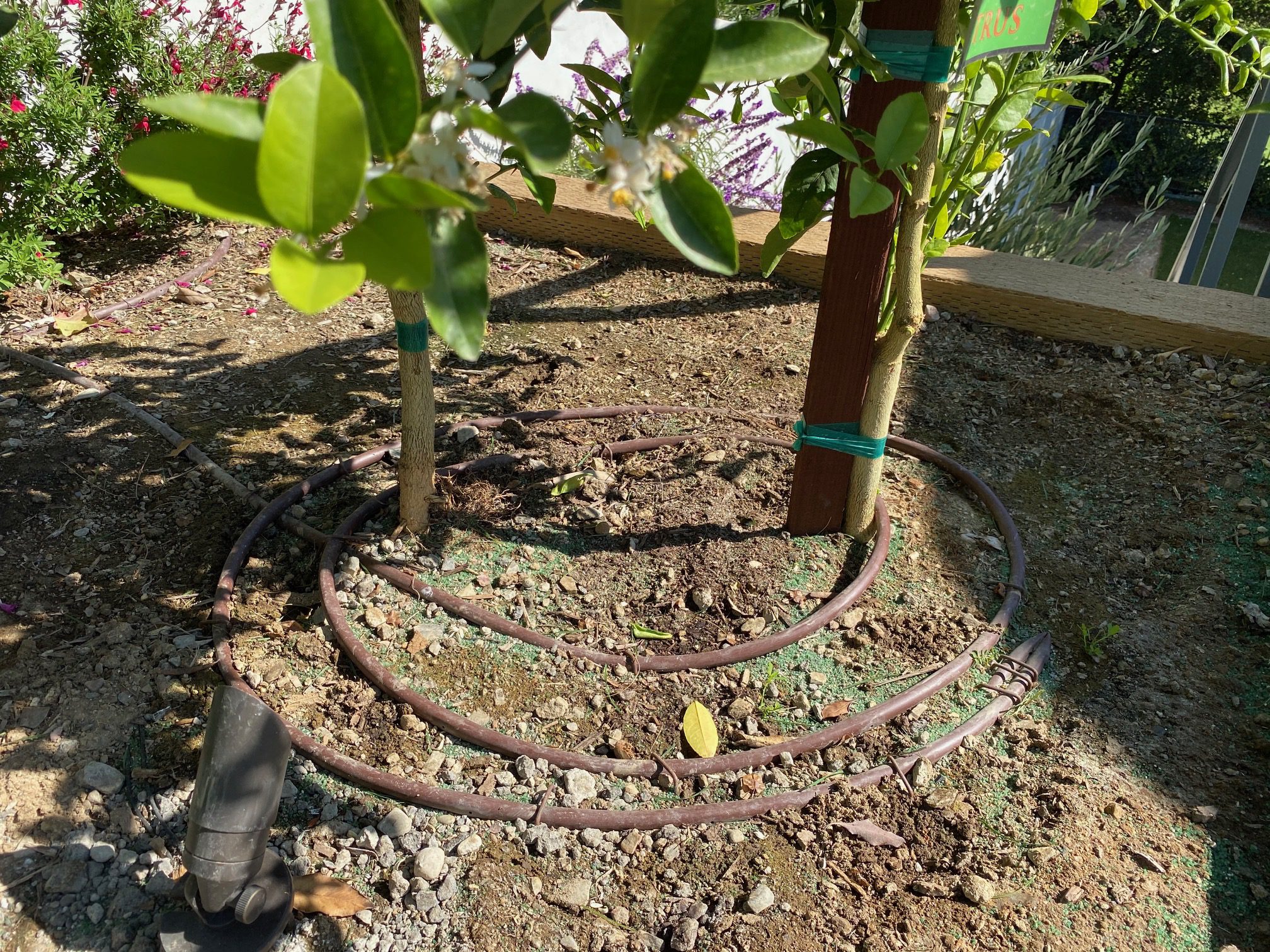
RIGHT-SIZED TREES = ACCESSIBLE FRUIT
We’re not farming for commercial production; our trees live in homes and community spaces. That means fruit should be within reach.
Better yields over time: A balanced canopy lets in light and air, reducing disease pressure and supporting consistent fruiting.
Manageable height: Through selection of semi-dwarf trees, thoughtful training and seasonal pruning, we keep trees at a size that’s easy to care for and harvest—no cherry picker needed.
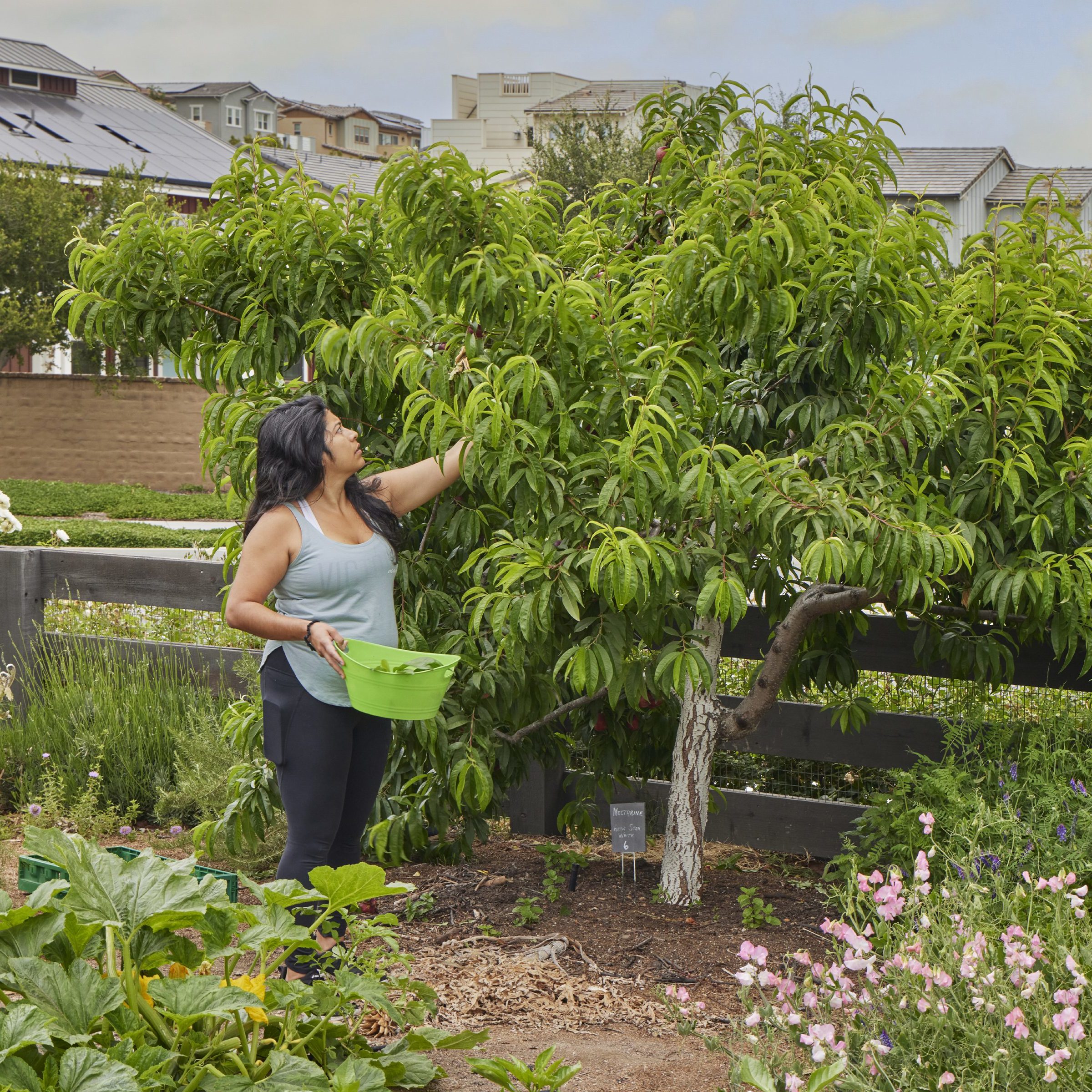
A YEAR-ROUND HARVEST
With smart variety selection, you can enjoy fruit across the seasons (timing varies by variety and microclimate):
Spring: Valencia oranges, grapefruit, apricot
Summer: Peach, plum, pluot, apricot, nectarine, pear
Fall: Apple, persimmon, pomegranate, avocado, fig
Winter: Lemon, lime, mandarin, navel orange, guava
Beyond the harvest, fruit trees bring horticultural diversity—evergreen and deciduous forms, showy and subtle blooms, and a wide range of leaf shapes and colors.
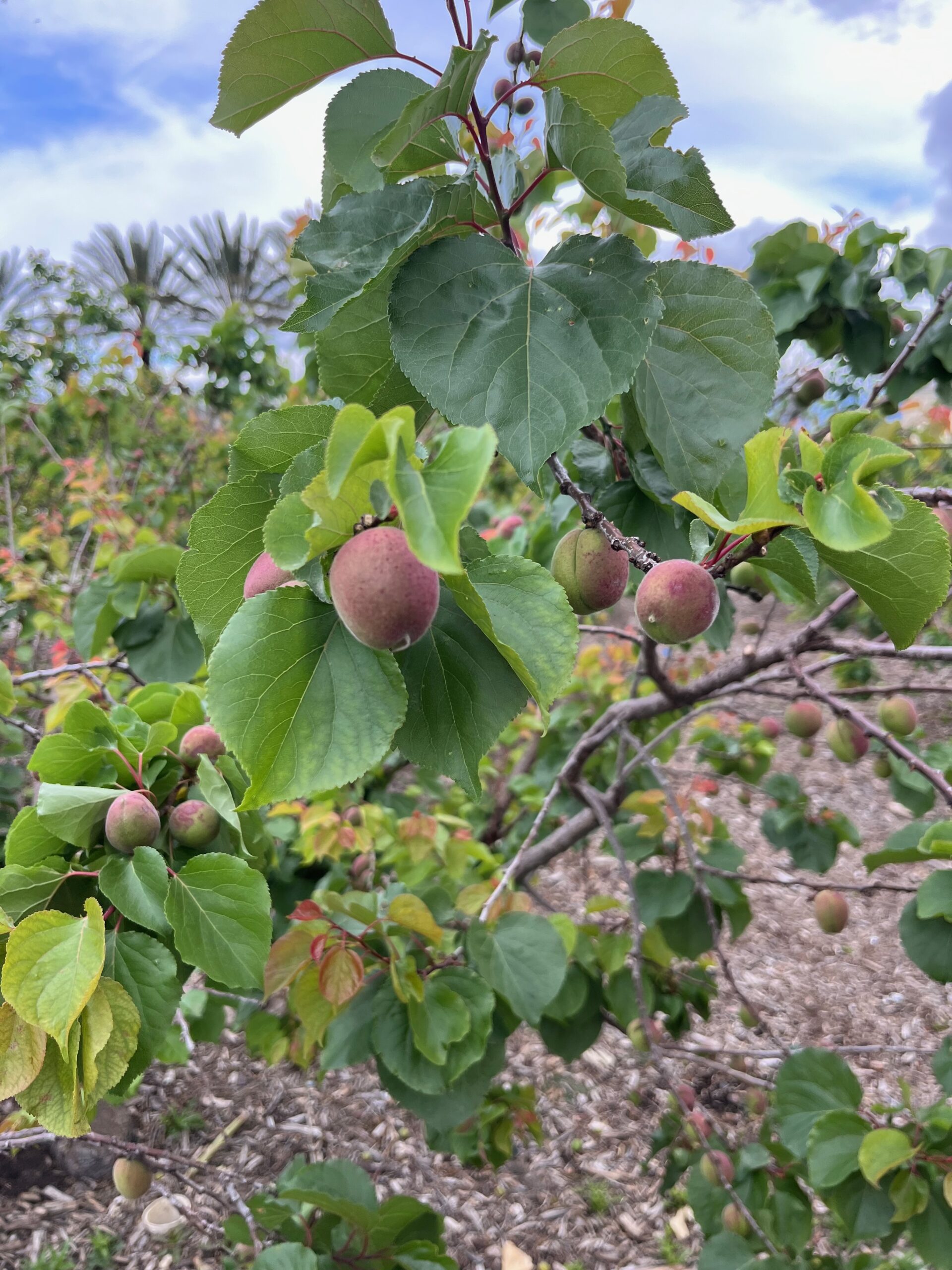
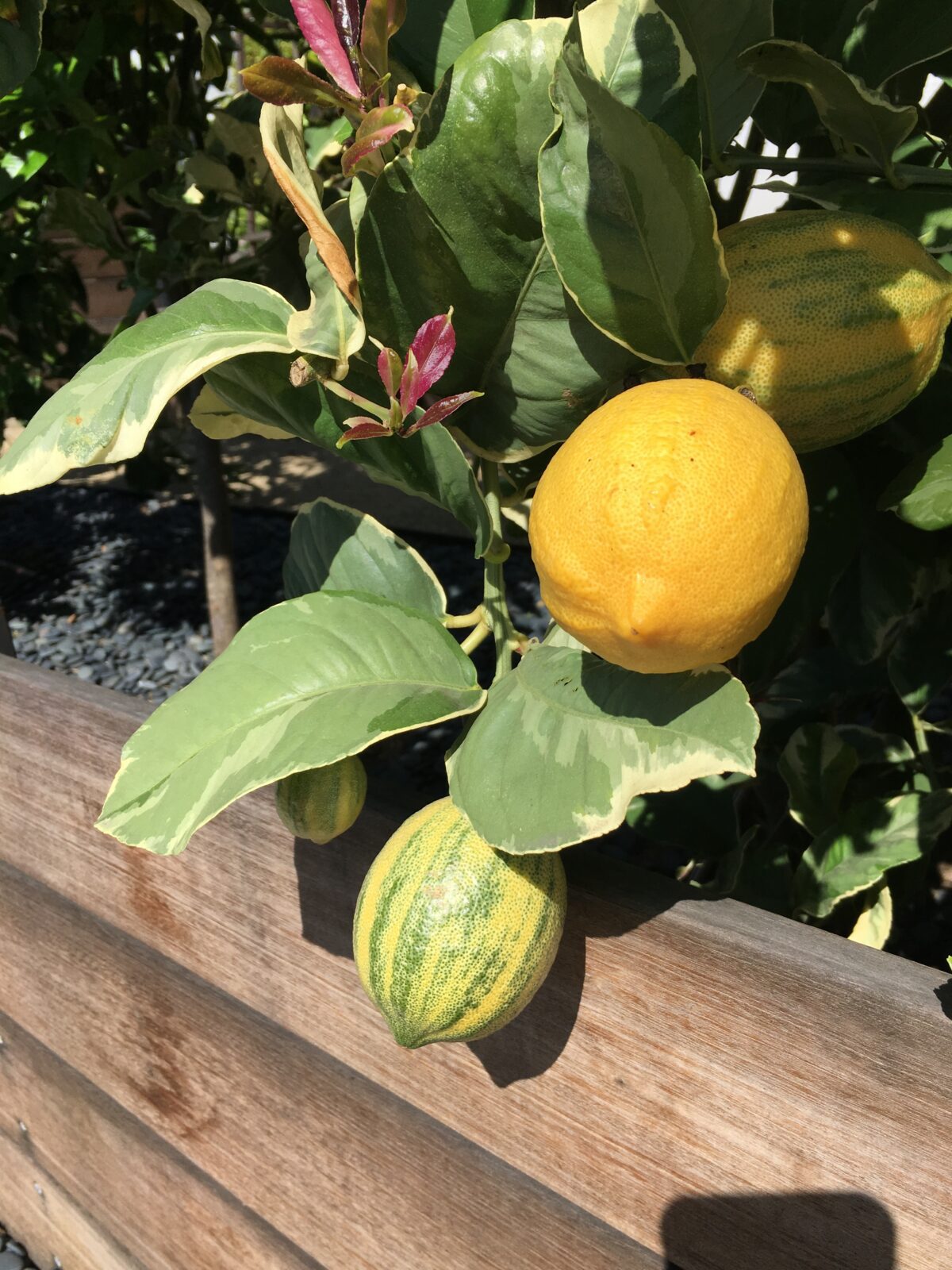
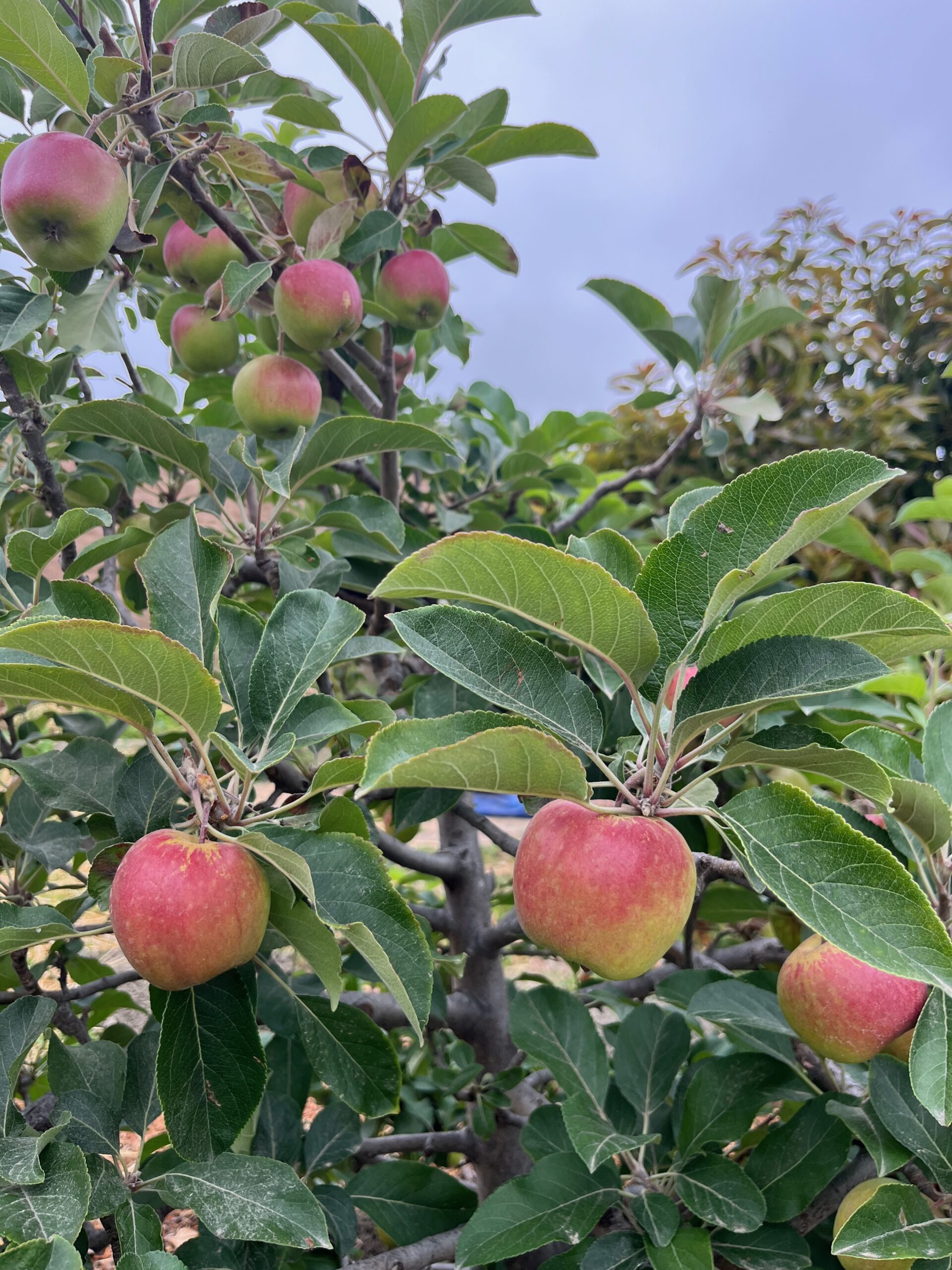
COMMON MISTAKES WE HELP YOU AVOID
- Rock or Decomposed Granite under trees: Bakes roots and does nothing to build soil health.
- Bubblers: Deliver too much, too fast, and don’t hydrate the critical zone between the root ball and surrounding soil.
- Fixed irrigation rings: Hard to expand, so trees outgrow their watering pattern.
- “Set it and forget it” planting: Trees need a long-term plan—soil, water, training, and seasonal care—not just a hole and a hose.
HOW FARMSCAPE CAN HELP
Whether you’re adding a few trees to an existing garden or designing a new orchard, we’ll set you up for success over time—not just on planting day.
- Variety selection: We match fruit types and cultivars to your tastes, microclimate, and desired harvest window (including chill-hour and pollinator pairings where needed).
- Placement & design: Sun, spacing, wind, and access—all tuned for healthy growth and easy picking.
- Planting: Proper root flare, soil prep, and a generous mulch basin to jump-start living soil.
- Irrigation: Drip spirals that adjust as the tree matures, with simple couplers for expansion.
- Pruning & maintenance: Seasonal pruning plans, thinning, feeding, pest and disease monitoring—everything your trees need to thrive and produce.
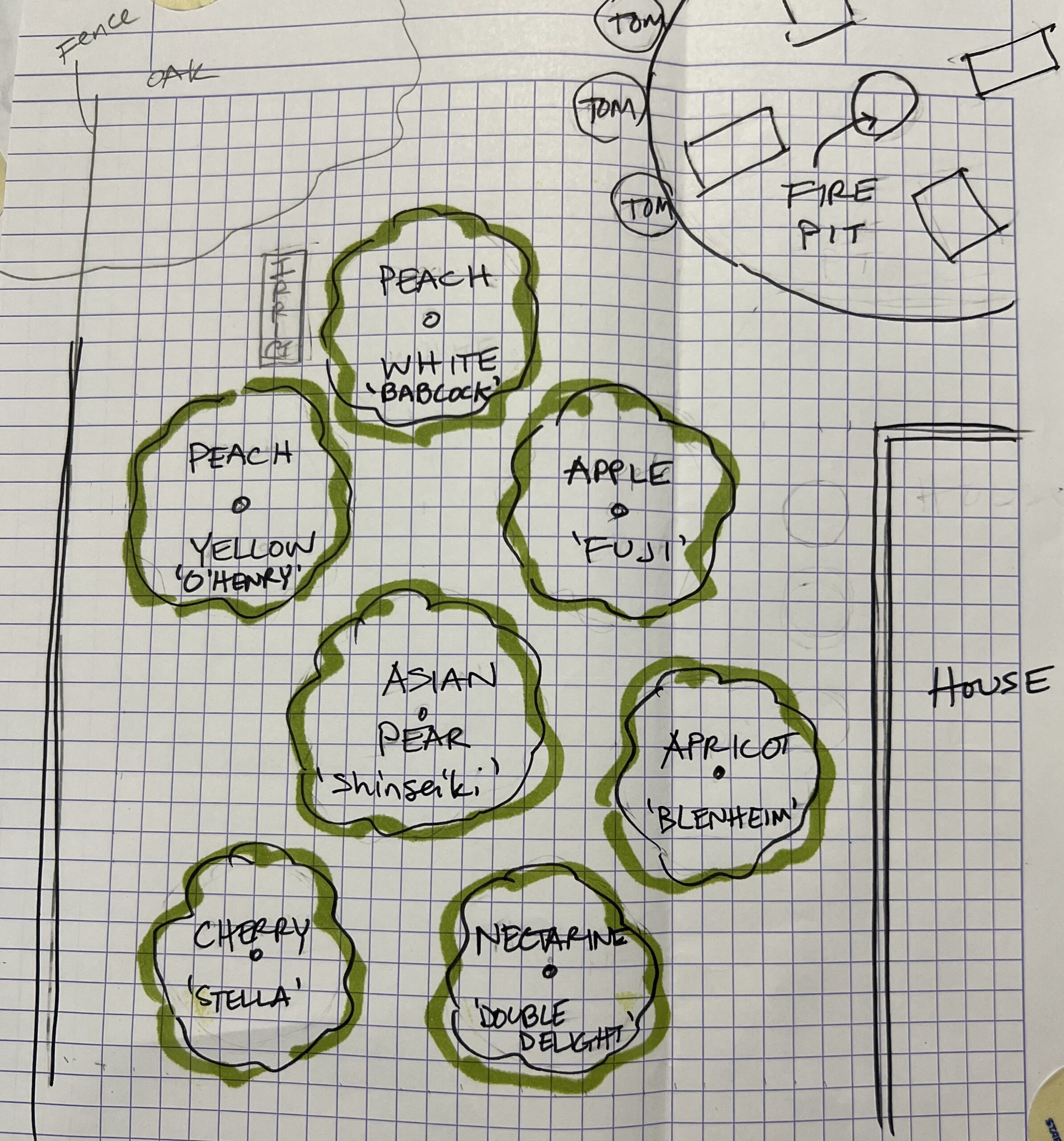
READY TO ADD FRUIT TREES TO YOUR FARMSCAPE?
We’d love to help with variety selection, placement, planting, and a pruning/maintenance plan tailored to your space. Get in touch and let’s design a year-round orchard you’ll actually harvest.



